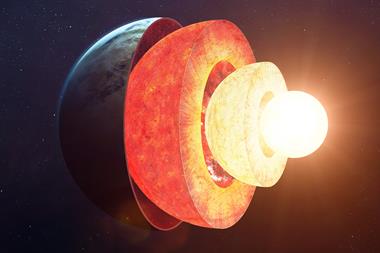US researchers have crossed a milestone in biological imaging by developing quantum dots small enough to pass from the blood stream into bodily tissue.
US researchers have crossed a milestone in biological imaging by developing quantum dots small enough to pass from the blood stream into bodily tissue.
Moungi Bawendi from the Massachusetts Institute of Technology (MIT) and colleagues created quantum dots less than 10nm in diameter that fluoresce at near-infrared wavelengths. These long wavelengths pass relatively unhindered through bodily tissue. Different size quantum dots fluoresce at wavelengths that span the visible spectrum, but smaller dots tend to fluoresce at shorter wavelengths (closer to the blue end of the spectrum).
Bawendi’s quantum dots comprise a small core of indium arsenide (less than 2nm in diameter) coated with zinc selenide. The ZnSe shell helps stabilise the quantum dots and provides them with a second, higher band gap for confining electrons. This means they can emit high intensity light at near-infrared wavelengths, including the biologically desirable 800-840nm range. The researchers attached dihydrolipoic acid and poly(ethylene glycol) to the coating to make the dots water soluble and to prevent protein binding. This produced quantum dots that were still only 8.7nm in diameter.
Bawendi’s team injected the quantum dots into mice and rats, and found that they circulated in the blood for a few minutes, before passing out of the blood vessels into the surrounding tissue. They also circulated in the lymphatic system and pinpointed individual lymph nodes.
The work marks an important step in the development of quantum dots as efficient and specific biological labels, said Bawendi.
Jon Evans
References
et alJ. Am. Chem. Soc. (DOI: 10.1021/ja0579816)






No comments yet